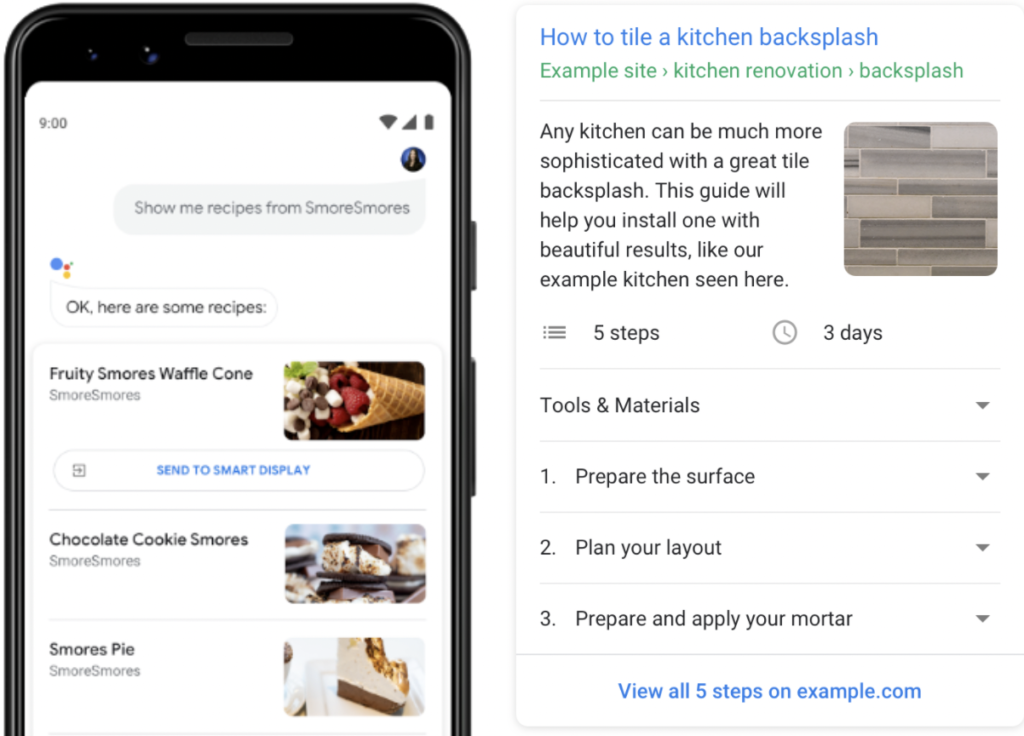When smart speakers and Siri came on the scene in the 2010s, experts predicted the meteoric rise of voice search. They were right.
Today, roughly 40% of Americans use voice search in 2022.

Moreover, 71% of people say they actually prefer using voice search over typing into a search bar. And half of people have made a purchase using a voice assistant.
Voice search shows no signs of slowing down. From smart speakers to smart phones, and smart TVs to smart watches, voice search is everywhere.
Here are four strategies you can use to capture more voice search in 2022.
Sections
1. Scout out featured snippet opportunities
When developing your content, review your keyword research for potential featured snippets. Featured snippets typically appear for long-tail keywords, which also tend to be less competitive. Think questions that start with “Who is…”, “What is…”, or “How do I…”. Step-by-step instructions are also good candidates for featured snippets.
Optimizing your content for featured snippets can not only boost your visibility in the traditional search results, but increase your chances of a voice search result as well.
Pro Tip: Before publishing your content, give it one more readover to ensure you haven’t missed any possible featured snippet opportunities.
2. Own your local presence
Are you a local business? Nearly 60% of people use voice search to find local business information.
So, make sure yours is easy to find, whether they’re typing or speaking. Ensure your Google Business Profile is up to date, and add Local Business schema to your website. Ensure you keep your operating hours up to date, and that your address and phone number is correct. Also review your “About” section to see if there is an opportunity to include relevant keywords and increase your chances of appearing in voice search.
3. Leverage schema for more visibility
Speaking of schema, voice search assistants rely heavily on schema, also known as structured data, to gather quick context about a website.
Do you have a FAQ page? Add FAQ schema to make it more easily accessible to smart assistants. Also consider other pages of your site where you can transform the content into a FAQ format. For example, if you have resource pages, consider recapping some of the most important points in a FAQ form. These may be leveraged as featured snippet results or as FAQ results.
Recipes and How-To content can also be read aloud by smart speakers.

You can also experiment with one of the newer schemas, Speakable Schema. Currently only available in Beta, this schema allows you to select portions of your content that are ideal for being read aloud.
4. Get conversational
Finally, don’t forget the golden rule of voice search: Write like you speak. When people use voice search, they are more likely to phrase their search query as a question, as opposed to a keyword phrase. For example, “set up smart speaker” becomes “How do I set up a smart speaker?”
When it makes sense, optimize your content for voice search by phrasing your headings and sub-headings as questions.
Learn more about voice search
Stay ahead with the latest best practices in voice search by subscribing to our blog here at Your Marketing People. We cover the latest in SEO, digital marketing, and more. We also recommend subscribing to the Google Search Central Blog so you’re the first to hear of any new voice search features.







